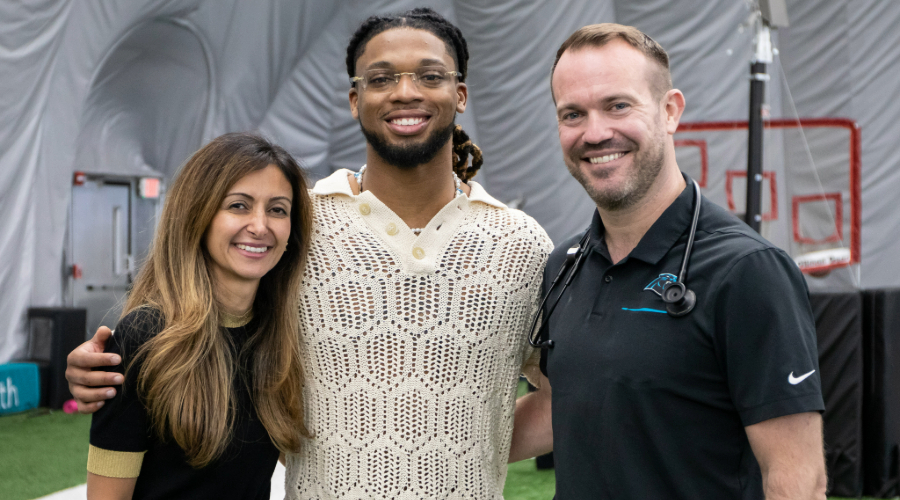
Damar Hamlin Injury Shocked the Nation: One Year Later
Atrium Health sports cardiologist urges sudden cardiac arrest readiness improvements nationwide
CHARLOTTE, N.C., Jan. 8, 2024 – It has been just over one year since the Buffalo Bills’ Damar Hamlin collapsed on the field during an NFL game against the Cleveland Browns. The incident shocked the nation and drew attention to the issue of athletes and sudden cardiac arrest (SCA). Adding still more visibility into SCA, in July 2023, the son of NBA star Lebron James, Bronny James, suffered an SCA during practice with his basketball team at the University of Southern California. The younger James only recently resumed playing college games.
As people reflect on Hamlin’s injury as we pass its anniversary, Atrium Health Sanger Heart & Vascular Institute sports cardiologist Dr. Dermot Phelan, who serves as the cardiology consultant to the National Football League and Major League Baseball scouting combines and is a member of the Cardiac Screening Advisory Committee for both the NFL and the NBA, says many high schools, colleges and universities – and even some professional sports teams – are not fully prepared for an SCA event.
“At a minimum, every high school, college, university and professional team should have readily available automated external defibrillators (AEDs), medically trained staff and an emergency response plan in place to be fully prepared for a sudden cardiac arrest,” said Phelan. “Unfortunately, there is wide variation across the nation in terms of preparedness.”
Phelan offers this readiness assessment:
- Professional sports: In many ways, these teams are setting the standard for the nation. For example, there are nearly 30 medical team members present and prepared at every NFL game. They are carefully rehearsed and understand their role in the event of an emergency.
- Colleges and universities: There is significant variation from one college to the next in access to AEDs, trained staff on site and having emergency response plans in place.
- High schools: There is wide variation in high schools due, in large part, to the fact that only 20 states have passed laws requiring AEDs and trained staff at sporting events.
As a point of reference to understand the risk, The National Center for Sports Injury Research has tracked SCA numbers in the NCAA and National Federation of State High Schools for the past 40 years. SCA accounts for about one-third of all catastrophic injuries. However, not all athletes have the same risk of experiencing SCA, as Black male athletes are more likely to suffer from an SCA event.
“This is an incredibly concerning disparity,” said Phelan. “It is imperative that we bridge these gaps through consistent policies and equitable resources to ensure that every athlete – regardless of their age, sport or level of play – receives the protection they deserve.”
Based on existing research and his experience, Phelan urges the public to do the following:
- Ask their school principals or college administrators if AEDs are at all athletic facilities and if there are trained staff in place for all games.
- Call on their state and federal representatives to pass laws requiring AEDs and trained staff at all facilities and games.
- Advocate for a new school policy that requires all high school students be trained in CPR before graduation.
“Damar Hamlin and Bronny James were fortunate to get immediate emergency lifesaving care,” said Phelan. “In the vast majority of SCA cases that happen at recreational facilities across the country, defibrillators are not used, even when they are available. This speaks to the importance of a coordinated, national campaign to have AEDs on-site, trained staff available and an emergency response plan in place.”
###
